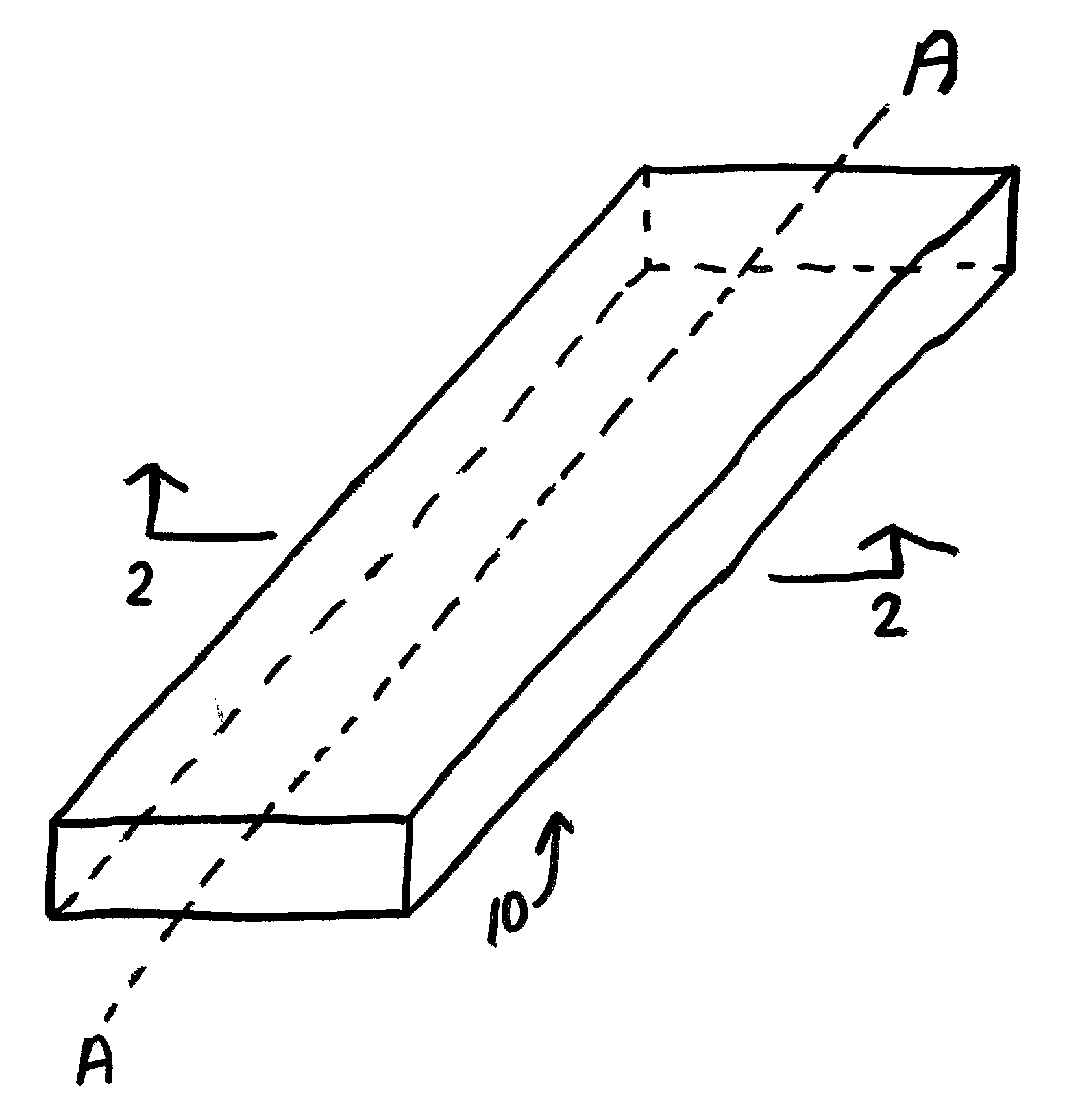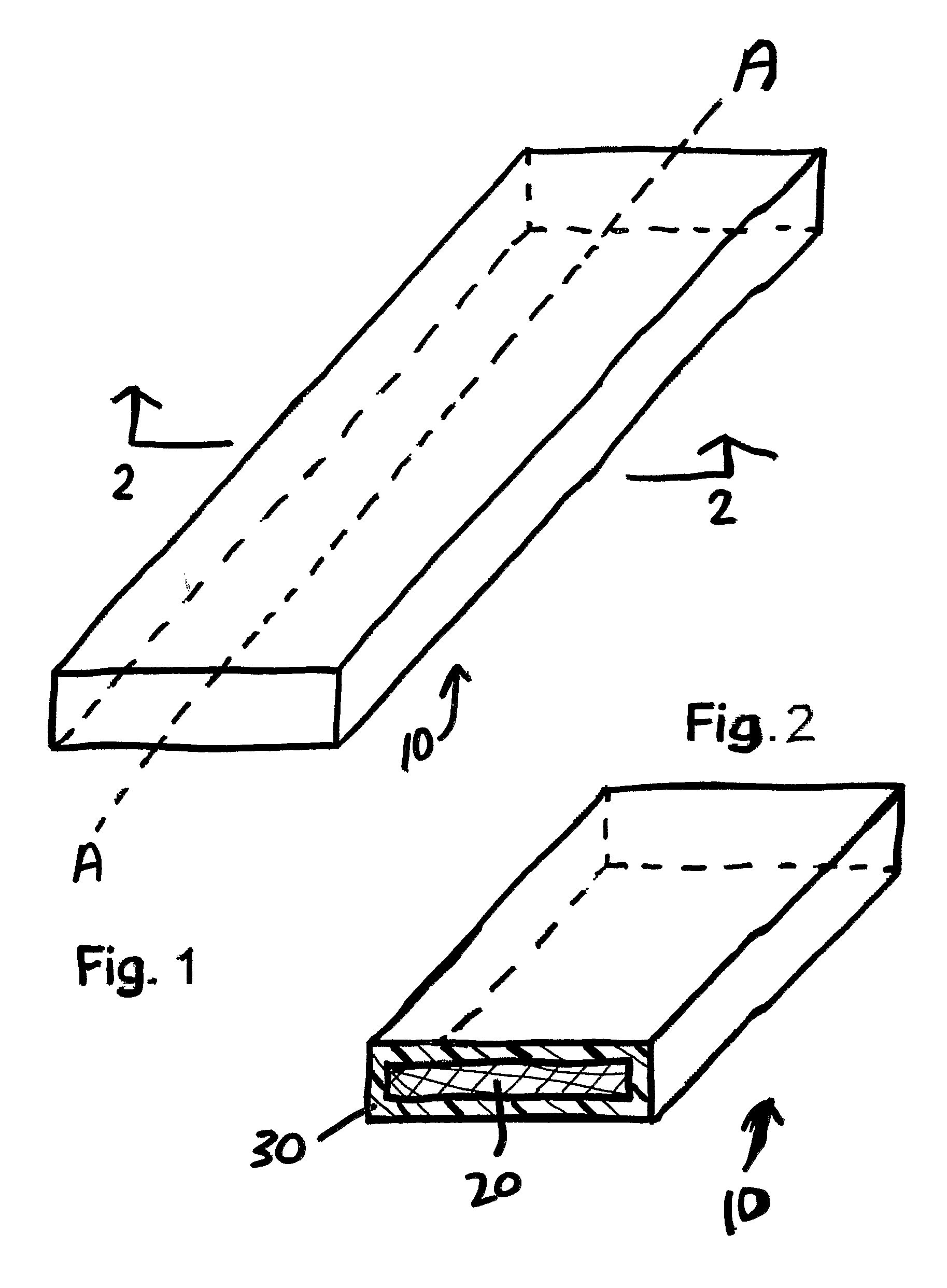Color Stabilized Composite Material
- Summary
- Abstract
- Description
- Claims
- Application Information
AI Technical Summary
Benefits of technology
Problems solved by technology
Method used
Image
Examples
example 1
[0121]a. Ingredients:[0122]i. Sodium perborate tetrahydrate (5 grams).[0123]ii. Sodium carbonate peroxyhydrate (5 grams).[0124]iii. 40 mesh maple wood flour (25 grams).[0125]iv. Water (100 grams)
[0126]b. The ingredients can be added at room temperature; however, higher temperatures will generally facilitate better results in less time.
[0127]c. Process step number 1.[0128]i. Blend the sodium carbonate, wood flour and water together and mix well. Continue to mix for 10 to 15 minutes.
[0129]d. Process step number 2.[0130]i. Add the sodium perborate tetrahydrate to the other ingredients from step one and continued to mix well for at least 5 minutes.
[0131]e. Upon the conclusion of the steps one in two, the material can be allowed to be:[0132]i. Air dried.[0133]ii. Accelerated drying by using heat and / or air circulation.[0134]iii. Fed into the next stage of a proprietary plastic processing machine.
example 2
[0135]a. Ingredients:[0136]i. Sodium carbonate peroxyhydrate (5 grams).[0137]ii. Hydrogen peroxide, 35% (5 grams).[0138]iii. 40 mesh maple wood flour (25 grams).[0139]iv. Water (100 grams)
[0140]b. The ingredients can be added at room temperature; however, higher temperatures will generally facilitate better results in less time.
[0141]c. Process step number 1.[0142]i. Blend the sodium carbonate, wood flour and water together and mix well. Continue to mix for 10 to 15 minutes.
[0143]d. Process step number 2.[0144]i. Add the hydrogen peroxide to the other ingredients from step one and continued to mix well for at least 5-10 minutes.
[0145]e. Upon the conclusion of the steps one in two, the material can be allowed to be:[0146]i. Air dried.[0147]ii. Accelerated drying by using heat and / or air circulation.[0148]iii. Fed into the next stage of a proprietary plastic processing machine.
example 3
[0149]a. Ingredients:[0150]i. Sodium perborate tetrahydrate (5 grams).[0151]ii. Sodium carbonate peroxyhydrate (5 grams).[0152]iii. Hydrogen peroxide, 35% (10 grams).[0153]iv. 40 mesh maple wood flour (25 grams).[0154]v. Water (50 grams)
[0155]b. The ingredients can be added at room temperature; however, higher temperatures will generally facilitate better results in less time.
[0156]c. Process step number 1.[0157]i. Blend the sodium perborate tetrahydrate, sodium carbonate, wood flour and water together and mix well. Continue to mix for 10 to 15 minutes.
[0158]d. Process step number 2.[0159]i. Add the hydrogen peroxide to the other ingredients from step one and continued to mix well for at least 5-10 minutes.
[0160]e. Upon the conclusion of the steps one in two, the material can be allowed to be:[0161]i. Air dried.[0162]ii. Accelerated drying by using heat and / or air circulation.[0163]iii. Fed into the next stage of a proprietary plastic processing machine.
PUM
| Property | Measurement | Unit |
|---|---|---|
| Weight | aaaaa | aaaaa |
| Thickness | aaaaa | aaaaa |
| Color | aaaaa | aaaaa |
Abstract
Description
Claims
Application Information
 Login to View More
Login to View More - R&D
- Intellectual Property
- Life Sciences
- Materials
- Tech Scout
- Unparalleled Data Quality
- Higher Quality Content
- 60% Fewer Hallucinations
Browse by: Latest US Patents, China's latest patents, Technical Efficacy Thesaurus, Application Domain, Technology Topic, Popular Technical Reports.
© 2025 PatSnap. All rights reserved.Legal|Privacy policy|Modern Slavery Act Transparency Statement|Sitemap|About US| Contact US: help@patsnap.com


